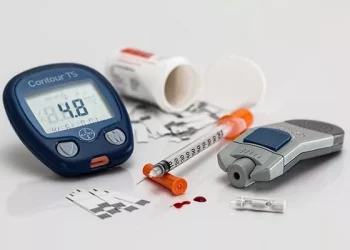Blood sugar, also known as blood glucose, plays a crucial role in maintaining the overall function and health of the body. As the main source of energy for the body’s cells, glucose is vital for numerous biological processes. Therefore, understanding the normal range of blood sugar levels and how they fluctuate throughout the day can help individuals maintain optimal health and avoid potential complications associated with diabetes and other metabolic disorders.
In this article, we will explore the normal blood sugar levels in the human body, the factors that influence these levels, and why it is essential to monitor them regularly to maintain a healthy balance.
What is Blood Sugar?
Blood sugar refers to the amount of glucose present in the bloodstream. Glucose, a simple sugar, is derived from the food we eat, primarily carbohydrates. Once digested, carbohydrates are broken down into glucose, which enters the bloodstream and is transported to cells throughout the body. Insulin, a hormone produced by the pancreas, helps regulate blood sugar levels by enabling cells to absorb glucose for energy or storage.
When blood sugar levels are too high (hyperglycemia) or too low (hypoglycemia), it can lead to various health issues. The body relies on a delicate balance to keep glucose levels within a healthy range, as both extremes can have significant consequences on overall well-being.
Understanding Normal Blood Sugar Levels
Normal blood sugar levels vary depending on when you measure them. Typically, blood sugar is tested in two main ways: fasting blood sugar (when you haven’t eaten for at least 8 hours) and postprandial blood sugar (measured 2 hours after eating). For adults, the American Diabetes Association (ADA) defines the following normal blood sugar ranges:
Fasting Blood Sugar:
Normal: 70–99 mg/dL (milligrams per deciliter)
Prediabetes (Impaired Fasting Glucose): 100–125 mg/dL
Diabetes: 126 mg/dL or higher
Postprandial Blood Sugar (2 hours after eating):
Normal: Less than 140 mg/dL
Prediabetes (Impaired Glucose Tolerance): 140–199 mg/dL
Diabetes: 200 mg/dL or higher
Hemoglobin A1c (HbA1c): This test measures the average blood glucose level over the past 2 to 3 months.
Normal: Less than 5.7%
Prediabetes: 5.7% to 6.4%
Diabetes: 6.5% or higher
It’s important to note that these values are not rigid and can vary slightly depending on the testing method, lab equipment, and individual factors. For example, pregnant women may have different blood sugar targets, particularly during gestational diabetes.
Factors Influencing Blood Sugar Levels
Several factors can influence blood sugar levels, including diet, exercise, medications, stress, and underlying health conditions. Let’s break down the key elements that can affect blood glucose levels:
Diet: The foods you consume directly impact your blood sugar levels. Carbohydrates, especially refined ones like white bread, sugary drinks, and processed snacks, are broken down quickly into glucose, causing blood sugar spikes. Conversely, whole grains, vegetables, and fiber-rich foods release glucose more slowly into the bloodstream, leading to more stable blood sugar levels.
Physical Activity: Regular exercise helps regulate blood sugar by increasing insulin sensitivity, allowing the cells to absorb glucose more efficiently. Additionally, exercise helps muscles use glucose for energy, which can reduce blood sugar levels. However, vigorous exercise without proper fueling may temporarily cause blood sugar levels to drop too low (hypoglycemia), especially in people on insulin or other glucose-lowering medications.
Stress: Chronic stress can cause blood sugar levels to rise due to the release of stress hormones like cortisol and adrenaline. These hormones stimulate the liver to release more glucose into the bloodstream. Managing stress through relaxation techniques, exercise, and mindfulness is essential for maintaining healthy blood sugar levels.
Medications: Certain medications, including those prescribed for diabetes, can significantly affect blood sugar levels. Insulin and oral hypoglycemic agents (e.g., metformin, sulfonylureas) lower blood sugar levels, while corticosteroids and some other drugs can cause blood sugar to rise. It’s important to work closely with a healthcare provider to adjust medication doses as needed.
Illness or Infection: During illness, the body undergoes stress, which can lead to higher blood sugar levels. Infections, fever, and inflammation can increase the production of stress hormones, which in turn can elevate blood glucose. For people with diabetes, it is important to monitor blood sugar more frequently during illness.
Hormonal Changes: Hormones can also play a role in regulating blood sugar levels. For example, during pregnancy, women may develop gestational diabetes, which can lead to higher blood glucose levels. Conditions like polycystic ovary syndrome (PCOS) and thyroid disorders can also affect blood sugar regulation.
Sleep Patterns: Poor sleep or sleep deprivation can contribute to higher blood sugar levels. Sleep deprivation can reduce insulin sensitivity, making it harder for the body to regulate glucose effectively. Additionally, interrupted sleep can increase hunger and cravings for high-carb foods, leading to spikes in blood sugar.
Monitoring Blood Sugar: Why It Matters
Monitoring blood sugar is essential for people with diabetes, prediabetes, or anyone looking to maintain overall metabolic health. Regular monitoring provides valuable insights into how lifestyle factors such as diet, exercise, and stress management influence blood glucose levels. It also helps individuals make informed decisions about managing their condition and preventing complications.
Here are a few reasons why monitoring blood sugar is important:
Early Detection of Abnormal Levels: Frequent blood sugar checks can help detect abnormal blood sugar levels before they lead to serious health problems. If blood sugar levels are too high or too low, taking corrective action promptly can prevent long-term complications, such as nerve damage, kidney problems, and cardiovascular disease.
Personalized Diabetes Management: For people with diabetes, monitoring blood sugar levels helps tailor medication doses, diet choices, and physical activity to achieve optimal glucose control. This helps prevent episodes of hyperglycemia (high blood sugar) or hypoglycemia (low blood sugar), which can both be dangerous if not managed properly.
Preventing Long-Term Complications: Consistently maintaining blood sugar levels within the target range can reduce the risk of developing long-term complications of diabetes, such as retinopathy (damage to the eyes), neuropathy (nerve damage), nephropathy (kidney damage), and cardiovascular disease.
Tracking the Effect of Lifestyle Changes: Monitoring blood sugar allows individuals to observe how changes in diet, exercise, and medication impact their glucose levels. It provides valuable feedback and helps reinforce healthy habits.
Tools for Monitoring Blood Sugar
There are various tools available to help individuals monitor their blood sugar levels, including:
Blood Glucose Meters: Blood glucose meters are the most common tool used for checking blood sugar levels. These portable devices require a small blood sample, typically obtained through a fingertip prick, and provide a reading of blood glucose levels in a matter of seconds.
Continuous Glucose Monitors (CGMs): CGMs are wearable devices that continuously monitor blood glucose levels throughout the day and night. They use a small sensor placed under the skin to measure glucose levels in interstitial fluid (fluid surrounding cells). CGMs can provide real-time data, making them particularly useful for individuals with diabetes who need to make frequent adjustments to their insulin doses.
A1c Testing: Although not used for daily monitoring, the hemoglobin A1c test is essential for assessing long-term blood sugar control. It measures the average blood glucose level over the past 2–3 months and is typically conducted by a healthcare provider every 3 to 6 months.
The Importance of Maintaining Normal Blood Sugar Levels
Maintaining normal blood sugar levels is crucial for overall health. Chronic high blood sugar levels (hyperglycemia) can lead to various complications, including heart disease, kidney failure, vision problems, and nerve damage. On the other hand, consistently low blood sugar (hypoglycemia) can cause confusion, dizziness, fainting, and, in severe cases, can be life-threatening.
For individuals with diabetes or those at risk of developing it, achieving and maintaining normal blood sugar levels is a lifelong commitment. By adopting a balanced diet, engaging in regular physical activity, managing stress, and regularly monitoring blood sugar levels, individuals can significantly improve their chances of maintaining good health and preventing the onset of complications.
Conclusion
Understanding what constitutes normal blood sugar levels and the factors that influence them is essential for maintaining a healthy lifestyle. Regular monitoring of blood glucose provides individuals with the knowledge and tools they need to manage their health effectively and avoid complications related to abnormal blood sugar levels. Whether through dietary adjustments, physical activity, stress management, or medication, keeping blood sugar levels in check is vital for promoting long-term health and well-being.
By staying informed about blood sugar levels and incorporating healthy habits into daily routines, individuals can take proactive steps toward managing their health and living a full, active life.
Related topics:


























